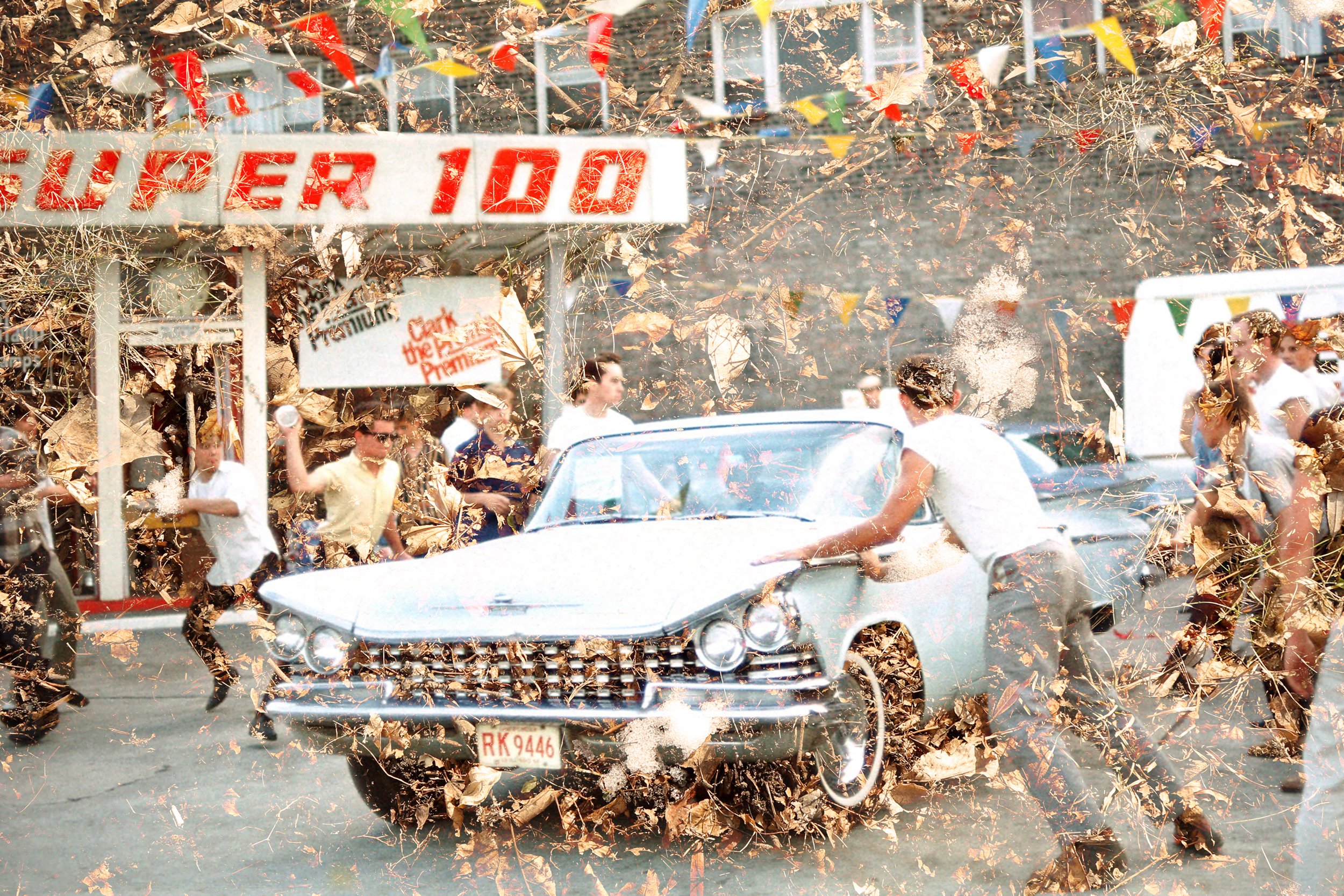
2023
Landscape and archival imagery, collaged and printed on acrylic and plastic transparencies + archival images and ephemera
Archival imagery sourced from Tom Palazzolo and Mark Rance’s 1978 documentary and Bernard Kleina’s color imagery
THE PALIMPSEST OF MARQUETTE PARK // The Nazi’s Neighborhood. A community battleground transformed over decades.
Today, the Marquette Park neighborhood on Chicago’s Southwest side in the broader Lawn Area of Chicago is predominantly Black and Latino. It borders the 323 acres of the park bearing the same name. The park boasts gymnasiums, an auditorium, tennis courts, playgrounds, and a monument dedicated to Martin Luther King Jr. Hosted events include a Hispanic Heritage Night and cheerleader camp.
Throughout the late 1960’s and 1970’s, Marquette Park— then comprising a mixed population of white ethnics— was the local headquarters for the National Socialist Party of America. Nazis. This era garnered attention and popular culture status in the 1980’s Chicago classic The Blues Brothers.
For years, this neighborhood was a violent battle ground. Bearing witness to racist violence, non-violent actions, rallies, protests and counter protests. In 1966, the Chicago Freedom Movement organized marches and protests throughout the Southwest side with the goal of ending housing segregation. MLK Jr. organized a march in Marquette Park on August 5th, 1966. White residents threw bricks and bottles. One striking King’s head. The Chicago Tribune quotes him saying that day: “I've been in many demonstrations all across the South, but I can say that I have never seen — even in Mississippi and Alabama — mobs as hostile and as hate-filled as I've seen here in Chicago.”
By 1980, the Marquette Park neo-Nazis collapsed. Not only was their leader Frank Collin arrested for being a pedophile, it came to light that his father was Jewish and had survived Dachau concentration camp.
According to journalist Jesse Dukes, “The Nazis may have been considered odd or extreme by many residents [in Marquette Park], but fear of integration was widespread. Without that strain of mainstream white racism, the neighborhood may not have tolerated a building with a swastika over the door or Nazi-uniformed men living inside it.”
Further engagements:
WEBZ’s interactive exploration of Marquette Park
Read When King Came to Chicago and see Bernard Kleina’s work
Marquette Park land imagery, photographed December 2023
A poster found after a protest against the neo-Nazis planned march in Skokie. (Courtesy Illinois Holocaust Museum)
A poster promoting George Lincoln Rockwell’s “White People’s March” in Chicago. (Courtesy Chicago History Museum, ICHi-037344-A)
A counter-demonstrator threw an object that hit Martin Luther King Jr. in the head as he was marching in Marquette Park on August 5, 1966. (Courtesy Chicago Sun Times)
Archival and landscape imagery on acrylic. Color plate 1
Archival and landscape imagery on acrylic. Color plate 2
Archival and landscape imagery on acrylic. Color plate 3
Archival imagery layered on transparency. Color plate 1
Archival imagery layered on transparency. Color plate 2
Archival imagery layered on transparency. Color plate 3
Buzz Alpert of the Jewish Defense League (left) physically confronted neo-Nazis in the streets. (Courtesy Illinois Holocaust Museum, Buzz Alpert Collection)
Members of the Jewish Defense League gathered in front of Rockwell Hall. (Courtesy Illinois Holocaust Museum, Buzz Alpert Collection)
A poster promoting George Lincoln Rockwell’s “White People’s March” in Chicago. (Courtesy Chicago History Museum, ICHi-037344-A)
Acrylic detail















